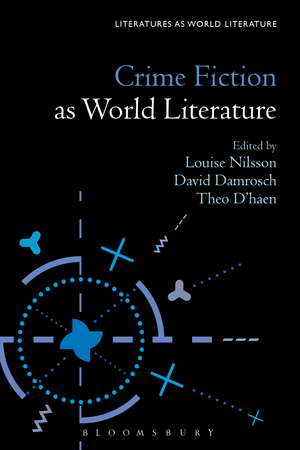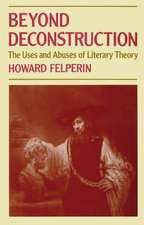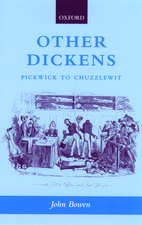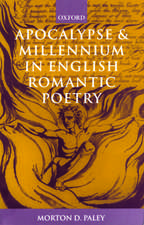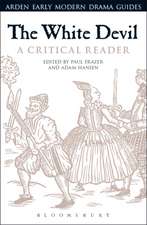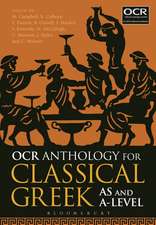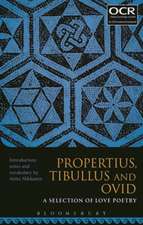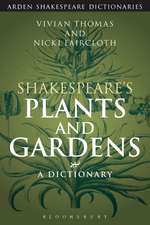Crime Fiction as World Literature: Literatures as World Literature
Editat de Dr. Louise Nilsson, Professor David Damrosch, Professor Theo D'haenen Limba Engleză Hardback – 22 feb 2017
| Toate formatele și edițiile | Preț | Express |
|---|---|---|
| Paperback (1) | 194.06 lei 6-8 săpt. | |
| Bloomsbury Publishing – 22 feb 2017 | 194.06 lei 6-8 săpt. | |
| Hardback (1) | 833.47 lei 6-8 săpt. | |
| Bloomsbury Publishing – 22 feb 2017 | 833.47 lei 6-8 săpt. |
Din seria Literatures as World Literature
- 20%
 Preț: 219.84 lei
Preț: 219.84 lei - 23%
 Preț: 191.13 lei
Preț: 191.13 lei - 28%
 Preț: 466.39 lei
Preț: 466.39 lei - 23%
 Preț: 191.92 lei
Preț: 191.92 lei - 23%
 Preț: 192.19 lei
Preț: 192.19 lei - 22%
 Preț: 251.65 lei
Preț: 251.65 lei - 22%
 Preț: 236.92 lei
Preț: 236.92 lei - 24%
 Preț: 190.33 lei
Preț: 190.33 lei - 23%
 Preț: 197.14 lei
Preț: 197.14 lei - 23%
 Preț: 193.18 lei
Preț: 193.18 lei - 23%
 Preț: 191.67 lei
Preț: 191.67 lei - 23%
 Preț: 199.20 lei
Preț: 199.20 lei - 23%
 Preț: 199.37 lei
Preț: 199.37 lei - 30%
 Preț: 776.32 lei
Preț: 776.32 lei - 23%
 Preț: 190.87 lei
Preț: 190.87 lei - 23%
 Preț: 192.64 lei
Preț: 192.64 lei - 23%
 Preț: 193.36 lei
Preț: 193.36 lei - 30%
 Preț: 718.19 lei
Preț: 718.19 lei - 21%
 Preț: 217.27 lei
Preț: 217.27 lei - 23%
 Preț: 192.01 lei
Preț: 192.01 lei - 22%
 Preț: 231.81 lei
Preț: 231.81 lei - 23%
 Preț: 198.12 lei
Preț: 198.12 lei - 13%
 Preț: 256.59 lei
Preț: 256.59 lei - 23%
 Preț: 197.42 lei
Preț: 197.42 lei - 22%
 Preț: 238.49 lei
Preț: 238.49 lei -
 Preț: 239.14 lei
Preț: 239.14 lei - 30%
 Preț: 539.49 lei
Preț: 539.49 lei - 30%
 Preț: 540.38 lei
Preț: 540.38 lei
Preț: 833.47 lei
Preț vechi: 1066.53 lei
-22% Nou
Puncte Express: 1250
Preț estimativ în valută:
159.50€ • 165.51$ • 133.32£
159.50€ • 165.51$ • 133.32£
Carte tipărită la comandă
Livrare economică 17-31 martie
Preluare comenzi: 021 569.72.76
Specificații
ISBN-13: 9781501319327
ISBN-10: 1501319329
Pagini: 312
Ilustrații: 7 b/w illustrations
Dimensiuni: 152 x 229 x 25 mm
Greutate: 0.59 kg
Editura: Bloomsbury Publishing
Colecția Bloomsbury Academic
Seria Literatures as World Literature
Locul publicării:New York, United States
ISBN-10: 1501319329
Pagini: 312
Ilustrații: 7 b/w illustrations
Dimensiuni: 152 x 229 x 25 mm
Greutate: 0.59 kg
Editura: Bloomsbury Publishing
Colecția Bloomsbury Academic
Seria Literatures as World Literature
Locul publicării:New York, United States
Caracteristici
Helmed by arguably the two most important literary critics of in world literature today, David Damrosch and Theo D'haen, and includes star authors such as Susan Bassnett and Michael Wood
Notă biografică
Louise Nilsson is a researcher in the English Department at Stockholm University, Sweden.David Damrosch is Ernest Bernbaum Professor of Literature at Harvard University, USA, where he is also Chair of the Department of Comparative Literature. Professor Damrosch is one of the world's foremost authorities on World Literature, past President of the American Comparative Literature Association, and author or editor of 17 books, including the ground-breaking What Is World Literature? (2003; translated into seven languages). Among his other publications are How to Read World Literature (2009), The Buried Book: The Loss and Rediscovery of the Great Epic of Gilgamesh ( 2007), and World Literature in Theory (edited; 2014).Theo D'haen is Professor of English and American Literatures at K.U. Leuven, Belgium. He is the author or editor of 53 books, including American Literature: A History (2014), The Routledge Concise History of World Literature (2012), World Literature: A Reader (edited with César Domínguez and Mads Rosendahl, 2013), A World History of Literature (2012), and The Routledge Companion to World Literature (edited with David Damrosch and Djelal Kadir, 2012).
Cuprins
Introduction: Crime Fiction as World LiteratureLouise Nilsson (Stockholm University, Sweden), David Damrosch (Harvard University, USA), and Theo D'haen (K.U. Leuven, Belgium) I. Global and Local 1. The Knife in the Lemon: Nordic Noir and the Glocalization of Crime FictionAndreas Hedberg (Uppsala University, Sweden) 2. After Such Knowledge: The Politics of Detection in the Narconovelas of Elmer MendozaMichael Wood (Princeton University, USA) 3. Red Herrings and Read Alerts: Crime and Trans-Cultural Clues in Almost Blue and Nairobi HeatTilottama Tharoor (New York University, USA) 4. The Detective Is Suspended: Nordic Noir and the Welfare StateBruce Robbins (Columbia University, USA) 5. Four Generations, One CrimeMichaela Bronstein (Stanford University, USA) II. Market Mechanisms 6. With a Global Market in Mind: Agents, Authors and the Dissemination of Contemporary Swedish Crime FictionKarl Berglund (Uppsala University, Sweden) 7. So You Think You Can Write. Handbooks for Mystery FictionAnneleen Masschelein (K.U. Leuven, Belgium) and Dirk de Geest (K.U. Leuven, Belgium) 8. Covering Crime Fiction: Merging the Local into Cosmopolitan Mediascapes Louise Nilsson (Stockholm University, Sweden) 9. Surrealist Noir: Aragon's Le Cahier Noir and Pamuk's The Black BookDelia Ungureanu (Harvard University, USA, and University of Bucharest, Romania) III. Translating Crime 10. Detective Fiction in Translation: Shifting Patterns of ReceptionSusan Bassnett (University of Warwick, UK, and University of Glasgow, UK) 11. Making It Ours: Translation and the Circulation of Crime Fiction in CatalanStewart King (Monash University, Australia) 12. In Agatha's Footsteps: The Cursed Goblet and Contemporary Bulgarian Crime FictionMihaela Harper (Bilkent University, Turkey) 13. A Missing Literature: Dror Mishani and the Case of Israeli Crime FictionMaayan Eitan (University of Michigan, USA) 14. World Detective Form and Thai Crime FictionSuradech Chotiudompant (Chulalongkorn University, Thailand) IV. Holmes away from Home 15. Holmes Away from Home: The Great Detective in the Transnational Literary NetworkMichael B. Harris-Peyton (University of Delaware, USA) 16. Sherlock's Queen BeeTheo D'haen (K.U. Leuven, Belgium) 17. Sherlock Holmes Came to China: Detective Fiction, Cultural Meditations, and Chinese ModernityWei Yan (Lingnan University, Hong Kong) 18. A Sinister Chuckle: Sherlock in TibetDavid Damrosch (Harvard University, USA) 19. Detecting Conspiracy: Boris Akunin's Dandiacal Detective, or a Century in Queer Profiles from London to MoscowElizabeth Richmond-Garza (University of Texas at Austin, USA)Notes on ContributorsIndex
Recenzii
An insightful comparative study ... Crime Fiction as World Literature carefully deconstructs the 'glocal' nature of a genre defined by a combination of rather fixed tropes reflecting local themes, which provide both unique and comfortingly recognizable atmospheres.
Crime Fiction as World Literature is a perfect introduction and a necessary text for students and scholars of crime fiction, as well as an important work for students and scholars of comparative and world literature.
There is much to like in this volume ... The authors of the different chapters make their topics easily understandable to an audience not necessarily versed in the intricacies of the genre and at the same time offer genuine contributions that sometimes cut across several disciplinary lines.
Here we have a study of crime fiction that, for once, is not satisfied with rounding up the usual suspects, but is fully aware that, like crime itself, crime fiction is a worldwide phenomenon. What is more, true to its 'world literature' perspective, this collection of essays has a close and rewarding look at the market mechanisms and the vicissitudes of translation without which crime novels (and novels in general) would be doomed to stay within their national orbits.
Crime fiction is read around the world in many different languages, and now we have an excellent and comprehensive collection of critical essays on world crime literature for those with a taste for murder and mayhem.
Crime Fiction as World Literature is a perfect introduction and a necessary text for students and scholars of crime fiction, as well as an important work for students and scholars of comparative and world literature.
There is much to like in this volume ... The authors of the different chapters make their topics easily understandable to an audience not necessarily versed in the intricacies of the genre and at the same time offer genuine contributions that sometimes cut across several disciplinary lines.
Here we have a study of crime fiction that, for once, is not satisfied with rounding up the usual suspects, but is fully aware that, like crime itself, crime fiction is a worldwide phenomenon. What is more, true to its 'world literature' perspective, this collection of essays has a close and rewarding look at the market mechanisms and the vicissitudes of translation without which crime novels (and novels in general) would be doomed to stay within their national orbits.
Crime fiction is read around the world in many different languages, and now we have an excellent and comprehensive collection of critical essays on world crime literature for those with a taste for murder and mayhem.
